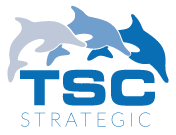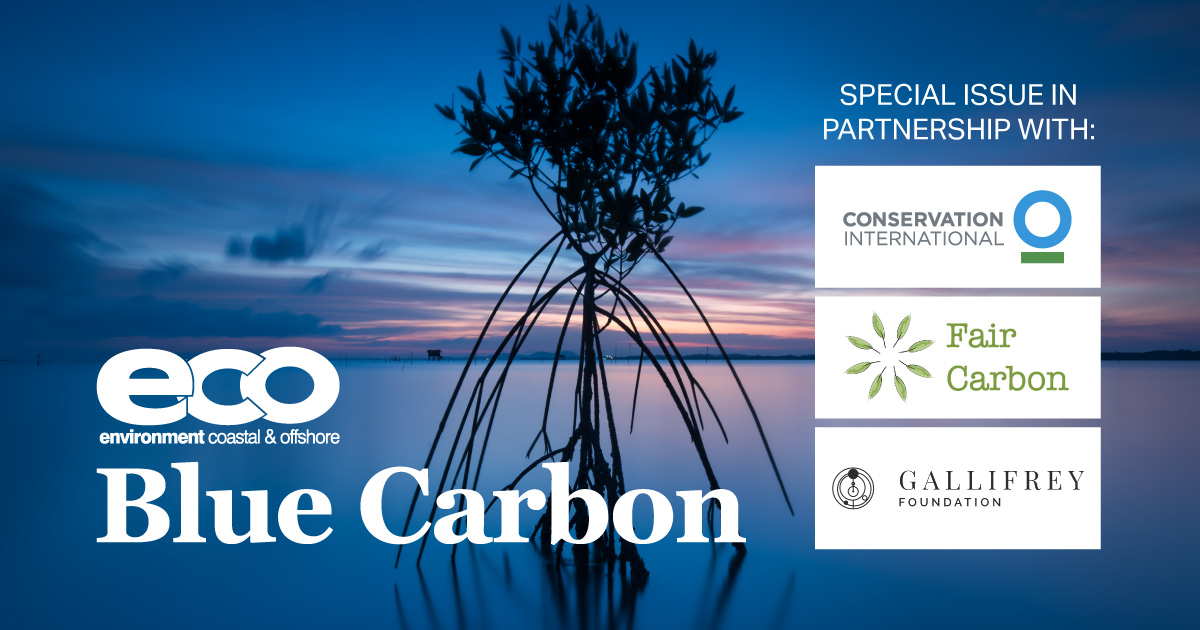ECO Magazine announced today the production of a special issue dedicated to Coastal Blue Carbon in partnership with the Conservation International and the Gallifrey Foundation
The term ‘Blue Carbon’ was coined a decade ago to describe the carbon captured and stored by the world’s ocean and coastal ecosystems. Blue Carbon ecosystems are up to five times more effective stores of carbon than terrestrial forests per hectare. These ecosystems are now being recognized for their role mitigating climate change, as biodiversity hotspots and for providing essential benefits to local communities, including coastal protection and food security.
Damage and degradation reduce the carbon sink capacity of these ecosystems, resulting in carbon dioxide emissions being released into the atmosphere. Experts suggest almost 1.02 billion tons of carbon dioxide is released each year from degraded coastal ecosystems. Restoring 'blue carbon' habitats such as mangroves, tidal marshes and seagrass meadows will be vital for preserving biodiversity and ecosystems services.
“Marine ecosystems are definitely the unsung heroes of carbon mitigation, and it’s exciting that ECO Magazine is recognizing blue carbon in this way,” said Emily Pidgeon, PhD, the Vice President of Ocean Science and Innovation at Conservation International. “We are excited to be part of this effort to highlight the incredible science and field work happening in waters around the world along coasts and waters around the world. There’s so much potential for blue carbon - it’s about time people start talking about it.”
Since 1987, Conservation International has worked to spotlight and secure the critical benefits that nature provides to humanity. Together with the International Union for Conservation of Nature (IUCN) and the Intergovernmental Oceanographic Commission (IOC) of UNESCO, Conservation International is leading the International Blue Carbon Initiative, which focuses on mitigating climate change by conserving and restoring coastal marine ecosystems globally. Most recently, Conservation International helped launch Vida Manglar, the first blue carbon project that accounts for the carbon store both above water, and below.
“At Gallifrey we are delighted to be joining with ECO Magazine and Conservation International in curating the Blue Carbon special issue. Interest in these valuable ecosystems has never been greater, and it is the shared responsibility of all of us to work together and ensure this interest translates to positive outcomes. We hope the stories presented help build a deeper understanding of how important blue carbon systems are – not just for their carbon storage, but to people, biodiversity, economies, and the planet,” said The Gallifrey Foundation’s blue carbon specialist, Mark Beeston.
The Gallifrey Foundation identifies collaborative opportunities to tackle ocean conservation issues by identifying synergies that could be exploited and roadblocks that could be overcome by working together. In 2021, they launched the Fair Carbon project which collaborates with leading conservation NGOs and other stakeholders to make it easier to design, register, and validate natural carbon projects that meet or surpass carbon standards' strict requirements.
ECO Magazine, Conservation International and the Gallifrey Foundation are now inviting those working on Blue Carbon topics to submit their interest in contributing to the special issue, which will be made available in August.
Kira Coley, ECO Magazine’s senior editor added, “It’s widely accepted that restoring coastal habitats such as mangroves can offer many benefits to local communities, biodiversity and climate change mitigation. But there is still a lot of misinformation that needs dispersing, discussions around financing and accreditation that needs to take place, and knowledge gaps that needs filling. Through this special issue, we hope to explore the opportunities and challenges of this complex topic and help to create new opportunities for collaboration.”
How do I contribute?
For this digital issue, we are interested in written (such as OP-EDs, feature stories and Q&A pieces), video (such as webinars, recorded lectures or a short film), and audio (such as podcasts) submissions about initiatives, new knowledge, partnerships, and activities that are relevant to the following:
- Blue Carbon Research (example topics: carbon capacity and storage, latest science, GHG mitigation services, etc)
- Policy & Finance (example topics: accreditation, novel funding mechanisms, carbon credits, role of policy in blue carbon projects, etc)
- Mapping & Restoration (example topics: best practices, new tools and approaches, case studies, etc)
- Beyond Carbon (example topics: marine biodiversity, threats, conservation, human interactions for subsistence, cultural significance, economic values, etc)
- The Future of Blue Carbon (example topics: Future research and policy needs, future changes to crediting and methodologies, ecosystem resilience, climate change and sea level rise, knowledge gaps, etc)
Due to the increasing popularity of ECO Magazine's digital series, spaces are limited. Those wishing to submit content should fill out the submission form as soon as possible. You can access the submission form here.
The editorial team will get in touch to discuss your submission and provide you with your allocated word count and a style guide. On acceptance, we ask that you submit your completed article by 20 June, 2022.
For more information about submitting a story to the Coastal Blue Carbon Special Issue, contact ECO’s Senior Editor, Kira Coley, at This email address is being protected from spambots. You need JavaScript enabled to view it..
Sponsorship Opportunities
ECO’s mission is to inform, connect and inspire the global ocean community. Through the production of print and special digital issues, we aim to help the discovery of viable solutions for the ocean’s most prevalent issues by facilitating knowledge-sharing and increasing topic awareness to a fast-growing international audience of ocean stakeholders. In 2021, ECO Magazine was viewed over 85,000 times by professionals seeking innovative solutions that will help further our collective understanding of the ocean and its inhabitants.
These special issues are free to readers and only made possible through the generosity of organizations wishing to support these efforts through paid sponsorship. Sponsorship packages start from as little as $500.
About the Conservational International
Conservation International protects nature for the benefit of humanity. Through science, policy, fieldwork and finance, we spotlight and secure the most important places in nature for the climate, for biodiversity and for people. With offices in 30 countries and projects in more than 100 countries, Conservation International partners with governments, companies, civil society, Indigenous peoples and local communities to help people and nature thrive together. Click here for more, and follow our work on Conservation
About The Gallifrey Foundation
The Gallifrey Foundation seeks to identify collaborative opportunities to tackle the most pressing ocean conservation issues facing us today. There are many organizations already deeply involved in the issues we care about, and our mission is to assist them by identifying synergies that could be exploited and roadblocks that could be overcome by working together. Our model of engagement is to partner with organizations, schools or businesses on the ground, draft a pilot project as a testing case, and then scale up the solutions based on the lessons learned.
About ECO Magazine
ECO (environment, coastal & offshore) is a trade magazine with a focus on ocean science, exploration, and innovation. Published 7-times a year, each issue is filled with intriguing stories written by those on the frontlines of scientific discovery and conservation. Through thought-provoking content, we take our readers on the search for viable solutions for the ocean’s most prevalent issues and go behind the scenes of international efforts to better understand and protect the underwater world.




